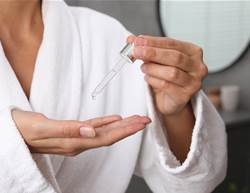It is a sad irony that as we age we naturally tend to get hairier in the places we don’t want, like our chin and top lip, while our hair thins out in the areas we want it to be lustrous and thick – like our scalp and our eyebrows. Fortunately though there are plenty of ways you can manage the growth of unwanted facial hair, without resorting to tweezers. But first, let’s look at the four key changes that happen to the hair on our face.
Moustache mouth
“This is often due to a normal change in hormones as we enter our 30s,” says Melbourne dermatologist Dr Adam Sheridan, a spokesperson for the Australasian College Of Dermatologists. A common dermatological issue that often masquerades as a moustache is melasma; hormone and UV damage-driven deep dermal pigmentation of the skin.
Wispy chin hairs
We’re born with the same hair follicles as men and after puberty, while men grow beards, women’s production of oestrogen causes shrinkage of those hair follicles, explains dermatologist Dr Anita Patel. At menopause we produce less oestrogen so these hairs can grow thick and dark. In some women this hair also appears in areas that are traditionally ‘male’, such as the chest and around the nipples.
Downy peach fuzz cheeks
Not everyone experiences an overgrowth of normal downy peach fuzz. “This is largely due to the interplay of genetics and hormonal changes,” explains Sheridan. “Everyone has hair distributed over most of their body, including the face and ears. Whether this is of sufficient concern to the individual is a subjective matter.”
Thinning eyebrows
“Eyebrow hairs do thin out as you age, just as hair on the scalp does,” says Patel. So it’s not just over-plucking that causes thinner eyebrows. “It’s not hormonal, it has more to do with ageing,” she explains. Just how much they thin out is also determined by your genes.










